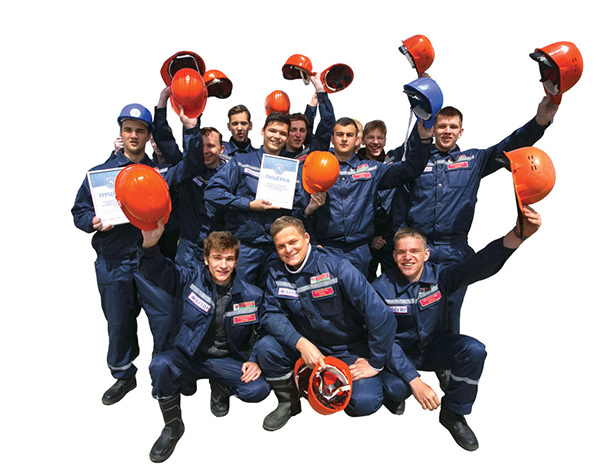‘Nuclear’ university students meet at largest Union State construction site
Тhe third working semester at the largest construction site, located in Ostrovets, is in full swing: an ambitious and friendly team of international students, comprising future nuclear engineers and builders, has united efforts. Of course, they’re lucky to have the opportunity to participate in this prestigious Union State project. Three years ago, only sixty people were gathered on the site; now, over 420 students from across Russia, Belarus and Kazakhstan are working there.

The curator of Russian Construction Teams at the all-Belarusian Youth Construction Site (at the nuclear power station), Roman Kopylov, notes that students are enjoying a unique internship. It may seem strange for young people to want to spend their summer holidays in this manner but many are curious to see how complex engineering objects are launched. He comments, “I’m a student at Nizhny Novgorod State Technical University (named after R. Alexeev), focusing on ‘nuclear power and thermal physics’. At university, we listen to lectures on nuclear power plants but it’s much easier for students to study theory after spending time at the construction of such sites. They’ll feel more confident at their first job as a result. Just imagine: we can see equipment only usually seen in textbooks with our own eyes: steam generators, high and low pressure heaters, and much more. No place is out of bounds to us, so we gain a correct and complete picture of a real nuclear power station.
To access the strategic site, students of Belarusian and Russian universities wishing to join a construction team have had to pass an interview. Those applying to head teams have also had to prove their aptitude. “In Moscow, we have a school of commanders and commissars of student construction brigades,” explains commissioner Ksenia Agibalova. “Applications are submitted by the most enterprising, who want to visit sites not as ordinary workers but in a management role. We’re working jointly with Roman for the second year, having helped build Novy Voronezh nuclear power station last year. Now, we’re in Ostrovets.”
To receive good salaries, young people have to work hard. They lay paving slabs and curbs. Students are attracted to all areas of the construction site but are watched every step of the way by experienced management. They only perform tasks not requiring special qualification.
Ever more nuclear power plants are being built, and the branch is expanding, needing expertise. Many of today’s student labourers hope to work at Ostrovets. Of course, residents of the Union State enjoy equal employment rights and salaries across Russia and Belarus; all will be welcome at Ostrovets.
“We view Belarus as a brotherly republic,” Roman says. “It doesn’t matter where we work: at a Russian or Belarusian station. Viuras (reactor control engineers) and operating staff will come from Russia and, in the course of time, Russian alumni will join. I don’t yet know how many will arrive but experience in the field of nuclear energy — which Russia boasts — will be shared step by step.
By Inna Kabysheva











